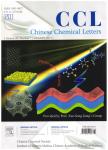版权所有:内蒙古大学图书馆 技术提供:维普资讯• 智图
内蒙古自治区呼和浩特市赛罕区大学西街235号 邮编: 010021

作者机构:Center for Excellence in Regional Atmospheric Environment Key Laboratory of Urban Pollutant Conversion Institute of Urban Environment Chinese Academy of Sciences Xiamen 361021 China University of Chinese Academy of Sciences Beijing 100049 China State Key Joint Laboratory of Environment Simulation and Pollution Control Research Center for Eco-Environmental Sciences Chinese Academy of Sciences Beijing 100085 China
出 版 物:《Chinese Chemical Letters》 (中国化学快报(英文版))
年 卷 期:2019年第30卷第7期
页 面:1450-1454页
核心收录:
基 金:supported by the National Natural Science Foundation of China (No. 51608504) Youth Innovation Promotion Association Chinese Academy of Sciences(No. 2017064)
主 题:Sodium addition Pd/Al2O3 Benzene Water resistance Catalytic oxidation
摘 要:A series of Na-doped 1 wt% Pd/Al2O3 catalysts with different Na loadings were prepared by wet impregnation and tested for the catalytic oxidation of benzene. Suitable addition of Na had a remarkable promotion effect on water resistance and enhancement of low temperature activity of Pd/Al2O3 catalysts. The optimal mole ratio between Na and Pd was 1:1. The properties of the prepared catalysts were characterized by X-ray diffraction (XRD), Brunauer Emmett Teller (BET), transmission electron microscopy (TEM), X-ray photoelectron spectroscopy (XPS), O2-temperature-programmed desorption (O2-TPD), and in situ DRIFTS. Results indicated that the addition of Na not only decreased the content of adsorbed water species but also increased the amount of liable surface oxygen species, which are likely the key factors for the excellent water resistance of the catalyst. Na addition also improved the mobility of the lattice oxygen species, which was favorable for catalytic activity. Moreover, the well-dispersed negatively charged Pd particles and suitable redox properties derived from Na addition also contributed to the improved performance and water resistance of the Na1Pd1/Al2O3 catalyst. In situ DRIFTS results revealed that benzene was oxidized to maleate and acetate species via intermediate o-benzoquinone species, which finally turned into harmless CO2 and H2O.